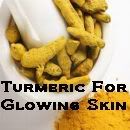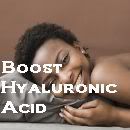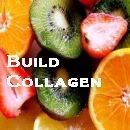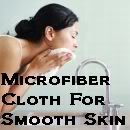
Vitamineral Green is an incredibly nutritionally dense, therapeutic green superfood powder which nutritionally supports blood sugar, detoxification, the immune system, liver, kidneys, blood, bones, colon, pancreas, muscles, brain, regularity, circulation, and longevity.
It's formulated by Jameth Sheridan (Naturopath, Doctor of Holistic Medicine, and Hard-Core Herbal Medicine Researcher), and is considered to be the elite in green powders by many.
From the package it says:
"Every ingredient, including how it is grown and processed, is therapeutic. It is an extremely potent and comprehensive array of nature’s most nutritive and cleansing superfoods, grown and processed to maximize their benefits. It contains a full spectrum of naturally occurring, absorbable and non-toxic vitamins, minerals, all the essential amino acids (protein), antioxidants, chlorophyll, soluble and insoluble fibers, tens of thousands of phytonutrients, and a plethora of other synergistically bound, organic nutrients. It contains no synthetic or isolated nutrients (not excreted as expensive yellow urine or stored as toxic deposits). Vitamineral Green is Actual Food."
Why is this such a healing powder? Here is a breakdown of the ingredients in Vitamineral Green.
NETTLE
While there has been some debate as far as the active compounds in nettles leaf, currently scientists believe that the plant is mainly comprised of complex sugars, called polysaccharides, as well as lectins. The anti-inflammatory properties are believed to come from the prostaglandins.
Active constituents in nettles leaf also include high levels of protein, calcium, phosphorus, iron, magnesium, and beta-carotene. The herb also holds high amounts of the vitamins A, C, D, and B complex. The leaves contain histamine, sterols, boron and silicon compounds.
The known benefits of nettles leaf are extensive, as this plant has truly been used for centuries on end. Currently, there are several well-known, well-documented benefits of nettles, including:
- Female tonic, especially for young women beginning menstruation and older women in menopause.
- May assist the body in the detoxification of chemicals and heavy metals
- Helps to reduce water retention, and is particularly helpful for PMS and menorrhagia, a condition where there is heavy menstrual flow in women.
- Helps stimulate mothers milk, and increases energy after childbirth.
- Natural testosterone booster which aids in increased vitality in men.
- Diuretic that increases uric acid secretion, while at the same time, resisting nighttime bathroom urges. Great for urinary problems and bed-wetting issues.
- Sterols, one component of nettles, reduce the activity of DHT, a type of testosterone, causing enlarged prostate.
- Anti-inflammatory capacities act to help many of the symptoms related to arthritis. The robust amounts of boron and silicon minerals reduce pain of osteoarthritis, tendinitis, bursitis, rheumatoid arthritis and gout. The leaves can be made into a paste to be rubbed directly on painful areas of skin for conditions such as rheumatoid arthritis.
- Anti-hemorrhaging qualities for internal bleeding, as well as small cuts and wounds
- Anti-asthmatic for both bronchial and asthmatic difficulties, helping to clear constricted bronchial and nasal passages.
- Magnesium components moderates the pain of Fibromyalgia
- Contains natural antihistamines. Wonderful for hay fever and allergies
- Natural kidney and adrenal-gland tonic
- Powerful analgesic
- Depurative agent
ALFALFA GRASS
Alfalfa is an amazing "Super food". It is high in calcium, magnesium, phosphorous, potassium, enzymes, chlorophyll, and trace minerals.
The protein content of alfalfa is among the highest of all plants. Alfalfa is also high in vitamins A,B,C,D,E,F and K. The roots of the Alfalfa are known to grow more than 30 meters into the soil. It can contain a wide variety of minerals and elements that are found deep in the soil.
Alfalfa has many health benefits including regulating the bodies cholesterol levels.
Its Medicinal Benefits perceived by people include:
- Fighting diabetes.
- Lowering of bad cholesterol (LDL).
- Healing arthritis.
- Curing kidney problem.
- Natural medicine for hair Loss and skin disorders.
- Helps to improve appetite and digestive Function.
- Cleanses blood, liver and bowel.
- Heals peptic ulcer.
- Preventing body infection.
- Treating anemia, cancer, body odor, asthma.
DANDELION LEAF
Dandelion leaves are 15% protein and high in vitamins and minerals. One cup of dandelion greens contains 112% daily recommendation of vitamin A, 32% of vitamin C, and 535% of vitamin K. They also contain 218 mg potassium, 103 mg calcium, and 1.7 mg of iron. Dandelion greens are also good sources of vitamins B1 (9% RDA), B2 (11% RDA) and B6 (11% RDA) and vitamin E (13% RDA).
The nutrients in dandelion greens may help reduce the risk of cancer, multiple sclerosis, cataracts, age-related macular degeneration and stroke. Dandelion contains anti-inflammatory properties which may provide benefit to those with asthma and other inflammatory diseases. Dandelion helps skin disorders and cleansing.
Dandelion Leaf is also effective at stimulating a sluggish gallbladder, which is responsible for storing and excreting bile as the body needs it. This natural herb is effective at promoting blood purity, which helps reduce the burden placed on the liver to filter out toxins. By helping to purify the blood, Dandelion Leaf allows the liver to more effectively perform its function.
- A natural source of minerals such as calcium, potassium, phosphorus, zinc and iron
- Provides the Vitamins A, B, C, and D
- Acts as a blood purifying agent
- A mild laxative for constipation symptoms
- Contains the antioxidant luteolin
- Stimulates urinary function to help flush out toxins (diuretic)
- Promotes optimal digestive function
- Supports normal bile production (cholagogue)
- Nourishes and boosts overall liver (hepatic) performance
Dandelion Leaf also serves to protect the liver from damage. Many people use the herb to cleanse their liver after drinking excess amounts of alcohol or after eating unhealthful foods. Read more about dandelions BARLEY GRASS
Barley grass is an excellent source of chlorophyll and antioxidants, and provides a wide range of vitamins and minerals including calcium, potassium, silica and iron, plus vitamins A, B1, B2, folic acid, C, E and K, manganese, copper, zinc, magnesium, cobalt, sulphur plus many of the nutrients and enzymes commonly found in dark green vegetables.
Barley grass is said to have 30 times more vitamin B1 and 11 times the amount of calcium than there is in cow’s milk, 6.5 times as much carotene and nearly 5 times the iron content of spinach, close to seven times the vitamin C in oranges, four times the vitamin B1 in whole wheat flour, and 80 micrograms of vitamin B12 per 100 grams of dried barley plant juice.
What barley grass can do:
It helps to alkalize the body. It helps in cell DNA repair; anti-aging. Barley grass acts as a free radical scavenger, reducing the amount of free radicals in the blood. It helps in improving skin health. It helps to stimulate weight loss. Barley grass helps in the treatment of arthritis; it also provides relief from arthritis pain. It helps in the treatment of asthma. It helps to combat blood clots. Barley grass helps to combat cancer. It helps to reduce low density lipoprotein (LDL) cholesterol (the 'bad' cholesterol) levels. Barley grass is helpful against diabetes; it also helps to delay or prevent blood vessel damage which could be caused by diabetes. It helps to reduce fatigue. Barley grass helps in relieving inflammation in various parts of the body; it also reduces inflammation-related pain. It helps to treat migraine. It helps to relieve stomach and intestinal disorders.It is a super anti-ager OAT GRASS
Oat Grass is an excellent source of beta carotene, vitamin K, folic acid, calcium, iron, protein, fiber as well as vitamin C and B vitamins. Oat grass has a relaxing and stimulating action that nourishes and strengthens the nervous system. It may be valuable for arthritis, hair loss, sexual function, rheumatism, stress, depression, debility, exhaustion, nerve tremors, epilepsy, convalescence, palpitations, nervous headache, nervous stomach, nervous breakdown, cholesterol balance, herpes, and menopausal symptoms. It is also used for thyroid and estrogen deficiencies, degenerative diseases such as MS, and for colds, especially recurrent or persistent.
Research now shows that it contains the anti-tumor compound b-sitosterol. This shows some suggestion that the chances of cancer in the bowel may be reduced by eating oat grass regularly, as well as cancers in general.
Oat grass is extremely rich in antioxidants, including polyphenols and one powerful antioxidant called tricin, a flavone compound that exerts smooth muscle relaxing properties, making it beneficial in gastro-intestinal cramping. Green oats are also high in beta-glucan, which helps stimulate immune functions. HORSETAIL
Horsetail is valued more for its health benefits due to a number of great minerals and other nutrients it contains, such as manganese, calcium, iron, flavonoids, caffeic acid esters, saponins, tannins, alkaloids, fatty acids, phytosterols, glycosides, phenolic acids, aconitic acid, and silica. Similar to Alfalfa plant, Horsetail is capable of absorbing unique minerals from the earth like silica which are not found in many other plants.
Horsetail is known for its anti-inflammatory, antibacterial, antimicrobial, antioxidant, coagulant, demulcent, diuretic and astringent activity.
Reportedly, it has been used in the treatment of a number of health conditions which include brittle bone, hair, teeth and nails, white spots on nails, gingivitis, tonsillitis, inflammation of the mucous membranes of the mouth, rheumatic disorders, edema, osteoarthritis, diabetes, acne, wounds, itchiness, rashes, burns, frostbite, chilblains, athlete's foot, cracked and tired feet, drawing out pus from boils and carbuncles, ulcers, fistulas, herpes simplex, dyspepsia (impaired digestion), gastrointestinal conditions, cardiovascular diseases, respiratory tract infections, bronchitis, fever, malaria, bladder problems, urinary tract infection, bed wetting in children, kidney stones (nephrolithiasis), prostate problems, hemorrhoids, muscle cramps, tumors, broken bones, fractures, sprains, nose bleed and other heavy bleeding.
Horsetail is also known to strengthen the body's immune system.
PARSLEY LEAF
Parsley is an excellent source of vitamins A, B, C, E and K, as well as calcium, magnesium, iron, phosphorus, manganese and potassium. Parsley also contains antioxidants, works as a diuretic, increases energy and possesses antiseptic properties. Parsley benefits the body so greatly that it is not surprising that this herb has made the transition from ancient to modern medicine. Parsley is high in vitamin A, beta-carotene and vitamin C. As a wholesome organic-food it is also a good choice for bone health with vitamin K (536 mg in an average serving).
Traditionally. parsley has been used for congestion and inflammation of the kidneys and bladder, gravel, stones, and urine retention. The root and leaves are excellent for the liver and spleen. It is also one of the best reliefs for edema, helping when other remedies have failed; parsley is a very reliable diuretic remedy often ignored today.
Parsley can prevent tumors, benefits the heart, improves the quality of the blood and strengthens the immune system.
AMERICAN BASIL
Basil is a well known antiseptic, analgesic, and antidepressant. It is a carminative with antispasmodic properties. It helps the nervous and digestive systems and stimulates blood flow. It is a natural espectorant and treats chronic and acute cough. It is a natural febrifuge that reduces fever. It stimulates the adrenal cortex and stomach, is a natural tonic and aphrodisiac, and is also used to treat respiratory tract problems such as cough, cold, bronchitis, and asthma and improves blood circulation.
- Basil leaves contain many notable plant derived chemical compounds that are known to have disease preventing and health promoting properties.
- Basil herb contains many polyphenolic flavonoidslike orientin and vicenin. These compounds were tested in vitro laboratory studies for possible antioxidant protection against radiation-induced lipid per-oxidation in mouse liver.
- Basil leaves contains many health benefiting essential oils such as eugenol, citronellol, linalool, citral, limonene and terpineol. These compounds are known to have anti-inflammatory and anti-bacterial properties.
- The herbs parts are very low in calories and contain no cholesterol, but are very rich source of many essential nutrients, minerals, and vitamins that are essential for optimum health.
- Basil herb contains exceptionally high levels of beta-carotene, vitamin A, cryptoxanthin, lutein and zea-xanthin. These compounds help act as protective scavengers against oxygen-derived free radicals and reactive oxygen species (ROS) that play a role in aging and various disease process.
- Zeaxanthin, a yellow flavonoid carotenoid compound, is selectively absorbed into the retinal macula lutea where it found to filter harmful UV rays from reaching retina. Herbs, fruits, and vegetables that are rich in this compound help to protect from age related macular disease (AMRD), especially in the elderly.
- Vitamin A is known to have antioxidant properties and is essential for vision. It is also required for maintaining healthy mucus membranes and skin. Consumption of natural foods rich in vitamin-A has been found to help body protect from lung and oral cavity cancers.
- Vitamin K in basil is essential for many coagulant factors in the blood and plays vital role in the bone strengthening function by helping mineralization process in the bones.
- Basil herb contains good amount of minerals like potassium, manganese, copper, and magnesium. Potassium is an important component of cell and body fluids, which helps control heart rate and blood pressure. Manganese is used by the body as a co-factor for the antioxidant enzyme, superoxide dismutase.
- Basil leaves are an excellent source of iron, contains 3.17 mg/100 g of fresh leaves (about 26% of RDA). Iron, being a component of hemoglobin inside the red blood cells, determines the oxygen carrying capacity of the blood.
HOLY BASIL
Modern uses suggest Holy Basil can enhance cerebral circulation and memory, relieve mental fog and cloudy thinking. It is sometimes used to help treat attention deficit disorder (ADD), attention deficit hyperactivity disorder (ADHD) and some types of depression. It is used to prevent cavities, for lung disorders, asthma, heart disease, kidney stones, headaches, immunity and anti-aging.
The reported physical benefits of Holy Basil include:
- Promotion of longevity
- Greater ability to maintain homeostasis and a healthy response to stressful situations
- Greater ability to maintain healthy cortisol levels and hormonal balance
- Greater ability to maintain a healthy inflammatory response
- Promotes metabolic efficiency and greater ability to maintain blood sugar within a normal range
- Greater resistance to bacterial infection, viral infection and fevers as well as the common cold
- Promotes respiratory health, and has been found to be helpful with allergies, bronchitis and asthma
- Promotes digestive health including gas and cramps
- Promotes eye health
Helps protect against the damaging effects of radiation - Exhibits antioxidant activity and contains polyphenols, Eugenol, Methyl Eugenol, Carophylene, Ursolic acid, Oleanoic acid and Rosmarinic acid
- Also used topically for insect bites and skin diseases
CHICKWEED
Nutrients in chickweed are beta-carotene, B vitamins (B1/Thiamin, B2/Riboflavin, B3/Niacin), Vitamin C, Bio-flavonoids (including glycoside rutin) Coumarins/coumarines, GLA/Gamma-linoleic Acid (omega-6 essential fatty acid) and calcium, copper, magnesium, potassium, iron, manganese, silicon, zinc.
Chickweed has numerous benefits, some of which include its use for treating chest infections. It is also good for treating rheumatism and other causes of joint inflammation. Chickweed is also a circulatory tonic that contains astringent and diuretic properties. Chickweed has been shown to benefit a variety of other ailments including psoriasis, cough and stomach ulcers.
Chickweed is a mild diuretic that contains saponins. This helps to emulsify the fat cells and flush them out of the body. Some believe it to be effective for balancing metabolism, which can potentially regulate the thyroid resulting in weight loss.
Chickweed is a natural diuretic, which means it helps flush out the kidneys, which usually results in reduced bloating. It also helps to alleviate water weight gain and fluid retention.
Benefits of Chickweed:
- Like most wild food it is super high in vitamins and minerals (Iron, Copper, Manganese, Magnesium, Zinc, Potassium, Vitamin C and A). It is higher in iron and zinc than any domesticated green. Zinc and Iron are especially important for those who choose to be vegetarian
- Helps maintain healthy weight (contains saponins, which may help to bind fats and remove them from the body)
- Nourishing for the lungs
- Helps carry off cellular debris through our lymph system and it also helps clean out and clean up cysts
- Great for drawing out infections and soothing pain (excellent herb to add in your homemade salves and oil infusions)
- Great remedy for eye problems (sties, conjunctivitis, pink eye, etc.)
MORINGA LEAF
Moringa, with it’s 90+ verifiable nutrients, not only contains all these elements, but also has significant portions of Vitamins B, B1, B2, B3, D, and E, polyphenols (antioxidants), other minerals, fiber, and is one of the highest, naturally occurring sources of chlorophyll.
According to the annals of the ayurveda, India’s old tradition of medicines, the leaves of the Moringa Tree could treat at least 300 diseases. Moringa leaf boosts your energy in a natural manner, and is a remarkable source of nutrition.
Moringa leaf can lower the blood pressure and promotes good sleep. It can also purify water since it has a detoxifying effect. Also a coagulant agent, Moringa can attach itself to hazardous bacteria and other materials, a process that is surmised to occur in the body too. The happy outcome is more sustained energy without any over-activity, balanced hormone and gland system, controlled blood pressure, and a rested nervous system.
Benefits of the Moringa Leaf:
- Increases the natural defenses of the body
- Provides nourishment to the eyes and the brain.
- Promotes metabolism with bio-available ingredients
- Promotes the cell structure of the body
- Promotes natural serum cholesterol.
- Lowers the appearance of wrinkles and fine lines.
- Promotes the normal functioning of the liver and the kidney.
- Beautifies the skin
- Promotes energy
- Promotes proper digestion
- Acts as an antioxidant
- Takes care of the immune system of the body
- Promotes healthy circulatory system
- It is an anti-inflammatory
- Gives a feeling of general wellness
- Supports the normal sugar levels of the body.
WHEAT GRASS
This grass is a balanced source of nutrition. It contains high levels of vitamins, minerals, amino acids, protein, enzymes, chlorophyll and mucopolysaccharides. Further, it's known to be highly alkalizing to the body and helps with detoxification.
Today, it's known that green cereal grasses such as wheat grass contain beta-carotene, vitamins K and C, folic acid, calcium, iron, protein, fiber, chlorophyll and many of the B vitamins. Although the mechanisms by which it promotes health are not known at this time, they've been said to fight and prevent cancer, lower cholesterol and blood pressure, boost the immune system, speed wound healing, promote good digestion and healthy skin, detoxify pollutants from the body and protect against the damaging effects of radiation.Read more about wheatgrass
Ginger has a wide variety of effects on the human body and is known to be effective for the treatment of cataracts, amenorrhea, heart disease, migraines, stroke, , angina, athlete's foot, colds, bursitis, chronic fatigue, tendinitis, flu, coughs, depression, dizziness, fever, erectile difficulties, infertility, kidney stones, Raynaud's disease, sciatica, and viral infections.
- Ginger has been used for in cooking and traditional medicine for thousands of years. It is currently one of the most widely used herbs worldwide.
- Ginger has been used traditionally for a long time to treat nausea. Scientific evidence confirms its uses as an herbal remedy for nausea and related ailments such as morning sickness and motion sickness.
- Ginger contains many antifungal compounds which make it a popular herb for treating athlete's foot.
- Studies have shown that ginger inhibits the production of cytokines, which promote inflammation. Therefore, the traditional Indian use for treating inflammation is gaining new found popularity.
- Some of the other traditional Asian uses for ginger include stimulating the appetite, promoting perspiration, and fighting body odor.
- It has been used to treat pain and traditional Indian Ayurvedic medicinal uses include ginger in herbal arthritis treatment.
- Treatment of joint pain, especially those conditions caused by poor circulation, is another popular use of this herb.
- Heart health is another benefit of ginger use. It has been shown to slow the production of LDL and triglycerides in the liver and prevent the clotting and aggregation of platelets in the blood vessels, associated with atherosclerosis and blood clots.
- Ginger has been used to treat common gastrointestinal complaints such as flatulence, indigestions and diarrhea. It has also been shown to lessen the severity of menstrual cramps.
- The ginger root has also been used to treat some of the symptoms of common cold and flu such as loosening phlegm and treating chills.
- Cough, asthma, halitosis, high fever, sinusitis, menstrual cramps and colic have been treated traditionally with ginger.
- It is a popular herbal remedy for heartburn.
YACON LEAF
It appears that substances in yacon have antioxidant, anti-microbial, blood sugar lowering, and liver protecting properties. Traditionally, Yacon has been used in South America both as food and to help control blood sugar and improve digestion. The fructooligosaccharide (FOS) in Yacon is an indigestible sugar that is low in calories and does not appear to have a significant effect on increasing blood sugar levels. Not only that, this product is a prebiotic, feeding friendly bacteria and boosting the immune system.
Yacon leaves contain a rich myriad of vitamins and minerals. In South America, tea from the yacon leaf has long been used as an herbal remedy for diabetes and high blood pressure. Research indicates that yacon leaves are effective at normalizing blood sugar levels. The yacon leaves oligofructose properties act similar to insulin in the body and reduces the burden on the pancreas. Studies also suggest that yacon leaves are beneficial for those with hypertension. By thinning the blood Yacon can lower blood pressure by 5 to 10 percent. It can also lower cholesterol and discourage clot formation. Yacon leaves also stimulate the body to break down fatty cells while boosting the metabolism.
Some possible benefits of yacon leaf may include:
● Normalizing blood sugar levels
● Reducing blood pressure
● Reducing the risk of atherosclerosis
● Reducing the risk of osteoporosis
● Prebiotic & antioxidant properties
● Nourishing & protecting the liver
● Natural antibacterial & antifungal properties
CAROB POD
Carob contains vitamins A, B, B1, B2, B3, B6, D; calcium; iron; potassium; magnesium; manganese; and about 8 percent protein. It's also very rich in fiber and pectin, and low in sodium. One tablespoon of carob powder contains two grams of fiber and one cup contains about 40 grams. Pectin helps to eliminate toxins from the body.
Nutrition and Health Benefits of Eating Carob
- Carob tannins contain Gallic acid that works as an analgesic, anti-allergic, antibacterial, antioxidant, antiviral and antiseptic.
- Carob improves digestion and lowers cholesterol level in the blood.
- It is used for treating diarrhea in children and adults alike.
- Since it does not contain caffeine, carob benefits people with high blood pressure.
- Regular use of carob helps in preventing lung cancer.
- The vitamin E content in carob helps in treating cough, flu, anemia and osteoclasis.
- The Gallic acid in carob helps in preventing and treating polio in children.
- Carob fights against osteoporosis, due to its richness in phosphorus and calcium.
- Carob pod husks are chewed by singers to clear the voice and throat.
SHILAJIT
Shilajit is a very potent antioxidant that helps fight free radicals and oxidation of the body’s cells. For this reason, it is thought to promote longevity.
This substance is said to be able to reduce pain, treat all types of arthritis, treat joint and muscle pain and treat inflammation. Many people consume Shilajit for these health conditions, especially as they get older.
Shilajit can strengthen the nervous system and help with stress, mental fatigue, epilepsy, anxiety and depression. It can also promote better concentration and is thought to increase learning ability and enhance memory.
It’s used to treat heart related ailments and maintain normal blood pressure. Shilajit is beneficial to the digestive system, stomach and intestines. It can relieve indigestion, gastritis, constipation, and pain in the abdomen.
It protects and enhances the workings of the kidneys, pancreas and thyroid gland. It increases blood circulation, as well.
Shilajit is considered a protector of the liver, as it maintains proper secretion of enzymes and juices that are essential to healthy metabolism. It possesses anti-microbial action that protects the body.
It is a strong immune system booster and protects the body from all types of illnesses, diseases and infections. It can be used to treat many respiratory problems, like cough and asthma. Shilajit is an anti-histamine and can be used for allergies.
Shilajit can increase physical strength, energy and stamina, making it great for hard working people and athletes. It increases sperm count in men and regulates sex hormones. It is thought to be a sexual enhancer.
Many people with diabetes consume Shilajit, as it helps metabolize blood glucose. It removes harmful toxins from the body and helps fight new toxin build-up.
In India, it is believed that there is almost no curable disease that can’t be assisted with the consumption of Shilajit.
AMLA BERRYRegular use of Amla benefits in acidity, fevers, colic, vomiting, insomnia, vision problems, excessive thirst, skin and hair problems, burning sensation of the body. It is a detoxifier, laxative, tonic, diuretic and digestive too.
Amla benefits in problems related to aging and improves the haemoglobin content of the blood, erases age spots on the skin, reduces blood sugar, clears and gives a glowing skin, reduces hair fall, stops nosebleed, strengthens the liver, is a brain tonic, a heart tonic, increases fertility, improves the functioning of the urinary system, improves muscle tone, acts as an antioxidant, lowers cholesterol, strengthens teeth and nails, treats leucorrhoea. It is beneficial in semen defects, joins broken bones and the list goes on.
Benefits of Amla
• Cure skin disorders: It is very useful in skin diseases as it has sheet virya in potency. It inhibits pitta and thus helps in getting relief from all the skin disorders caused by pitta dominance. Regular intake of Amla promotes glow on skin and delays wrinkles or loosening of skin.
• Control hair loss: Its internal use as well as its local application on scalp helps to control hair loss. It stimulates hair follicles thus promoting hair growth and also improves texture of the hair. It also prevents premature graying of hairs and dandruff.
• Improves eyesight: It is very useful in improving eyesight. It also counters diseases like reddening, itching and watering of eyes. It has also shown some good results in cataracts.
• Control sugar level: It is also very useful in controlling blood sugar level. Prepare a mixture of amla, jamun and bitter gourd powder (equal quantities). Take one teaspoonful of this mixture once or twice a day to make your diabetes under control.Read more about amla berry SPIRULINA
Spirulina is an excellent source of potassium, calcium, zinc, magnesium, manganese, selenium, iron and phosphorus. Packed full of phytochemicals, spirulina has significant amounts of protein, essential amino acids, essential fatty acids, chlorophyll, carotenoids including beta-carotene, vitamins, minerals, unique pigments and polysaccharides. Spirulina also has probiotic compounds that enhance health through preserving resident intestinal microflora, especially lactic acid bacilli and bifidobacteria, and decreasing the level of Candida albicans.
Researchers also found that Spirulina produces an immunostimulating effect by enhancing the resistance of humans, mammals, chickens and fish to infections by stimulating the production of antibodies, cytokines, macrophages, T and B cells. Liver-protective properties of Spirulina are attributed to its antiinflammatory, antioxidant, membrane-stabilizing, and immunocorrecting actions. Spirulina sulfolipids have also proved to be active against HIV and whole Spirulina biomass against herpesvirus, cytomegalovirus, and influenza virus. Spirulina extracts have also been shown to reduce cholesterol, inhibit development of abnormal growths and prevent allergic reactions, including anaphylaxis.
Spirulina has a history of use as actual food in Chad where locals traditionally consume 9-13 grams per meal, and these meals make up from 10 to 60% of daily food ingesion. Research on the traditional usage of Spirulina as a food was done by Delpeuch and others and published in 1976 in the article entitled, Consumption as food and nutritional composition of blue-green algae among populations in the Kanem region of Chad (Ann. Nutr. Aliment. 29: 497-516). After this report, the United Nation's FAO organized an educational campaign in Chad to encourage consumption of Spirulina harvested from natural sources and more than 6000 meals were distributed under the supervision of the FAO. As a top source of chlorophyll, beta-carotene and protein and to detoxify the kidneys and liver and inhibit the growth of fungi, bacteria and yeasts, Dr. Susan M. Lark, M.D., who specializes in preventive medicine and clinical nutrition in Los Altos, Calif and teaches at Stanford University Medical School, recommends Spirulina daily. Read more about spirulina
CHLORELLA
Chlorella helps build the immune system and detoxify heavy metals and other poisons in the body. It improves the digestive and elimination system, normalizes blood sugar and blood pressure levels, increases and clarifies focus and attention, builds the blood, improves energy level, balances body pH, and cleanses the breath.
Chlorella contains the complete vitamin B complex with more B-12 than liver (which may not be assimilable by the body, though) . It also has abundant amounts of vitamin C, vitamin E, a broad spectrum of enzymes including pepsin for digestion, beta-carotene, iron, zinc, macro minerals such as calcium, magnesium, zinc, potassium, rare trace minerals, essential fatty acids including gamma linolenic acid (GLA), and polysaccharides. Chlorella is 18% chlorella growth factor, up to 10% RNA, and up to 3% DNA. Its chlorophyll content is higher than the other algae and grasses.
The tough outer cell wall of chlorella, which we open in our unique processing technique allowing access vital nutrients, provides a fiber that eliminates toxins, pesticides and heavy metals by chemically binding them in digestive tract. It aids the body in the breakdown of hydrocarbons and metallic toxins such as DDT, PCB, mercury, cadmium and lead, while strengthening the immune system. This fibrous broken outer cell wall also provides material that greatly enhances digestion and health of the digestive tract. The chlorophyll in chlorella has a magnesium ion at its center, giving it remarkable red blood cell building ability. This makes it an excellent transporter of oxygen and bloodstream cleanser. Chlorella stimulates the activity of T-cells and macrophages by increasing interferon levels. This enhances the immune system's ability to combat foreign invaders such as bacteria, viruses, chemicals and foreign proteins. It is a power cancer fighter.
KELP
The benefits of kelp are legion, and the praise it receives from natural health researchers shows no sign of ending. Let’s take a look at those benefits now.
Good source of iodine – Kelp contains high amounts of iodine, which helps to improve thyroid function (iodine regulates thyroid hormones), maintains the health of our metabolism and immune system, and guards us against radiation poisoning.
Anti-inflammatory properties – Like hijiki and other brown algae, kelp contains the sulfated carbohydrate molecule fucoidan, which is a potent anti-inflammatory.
Good source of iron – Like most sea vegetables, kelp contains a large amount of iron, an essential mineral that is responsible for supplying our blood cells with oxygen. Many people across America suffer from a deficiency in iron, which can lead to chronic fatigue, skin ailments, brittle fingernails, and more.
Antioxidants – Like blueberries and several other superfoods, kelp contains antioxidants, which are substances that can protect our bodies’ cells from free radicals and other potentially hazardous elements.
Prevention against cancer – The anti-cancer benefits of kelp are well-documented. For example, a study at the University of California, Berkeley found that a kelp-rich diet helped prevent estrogen cancer in women due to its phytoestrogen content (phytoestrogen is nature’s estrogen ‘backup’). Japanese women, who regularly incorporate kelp into their diet, demonstrate much lower instances of ovarian and breast cancer than their kelp-shy Western counterparts.
Aside from the health benefits listed above, one serving of kelp (10g) will provide us with 2% of our RDA of calcium, 1% of our RDA of vitamin C, and 1% of our RDA of dietary fiber. It also contains zero fat, cholesterol, or sugars, and only 4 calories, which makes it an excellent food for weight loss. On the negative side, kelp is quite high in sodium.
The nutrients in kelp can provide significant benefits to your skin, nails and hair in the form of a healthier looking complexion and stronger nails and hair.
Kelp comes from the sea which is rich in vital minerals and nutrients, so it makes sense that it might contain a number of health promoting properties.
These include:
- Kelp stimulates and boosts your immune system
- Kelp helps prevent heart disease
- Kelp encourages healthy liver function
- Kelp aids in brain development
- Kelp helps to prevent osteoporosis
- Kelp helps to lower cholesterol levels
- Kelp is good for joints which reduces arthritic pain
- Kelp kills the Herpes virus which causes cold sores
- Kelp is a natural energy booster
- Kelp helps with digestion, flatulence and constipation
- Kelp is good for fertility in both men and women
DULSE
Dulse is approximately 22 percent protein, extremely high in vitamins B6 and B12, and relatively low in sodium. A small amount provides more than 100 percent of the RDA of vitamin B6, iron and fluoride as well as 66 percent RDA of vitamin B12. The sea vegetable is also quite high in vitamin A, potassium, phosphorus, manganese, calcium, and iodine.
- Supportive of Thyroid Gland
- Excellent Source of Protein
- Prevents High Blood Pressure
- Supportive of Nervous System
- Muscle Strength
- Prevent Muscle Cramping
- Prevent Kidney Disorders
- Excellent Source of Iodine
BLADDERWRACK
Bladderwrack is rich in iodine, calcium, magnesium, potassium, sodium, sulfur, silicon and iron and high in some B-complex vitamins. It contains moderate amounts of phosphorus, selenium, manganese and zinc and small amounts of vitamins A, C, E and G. It also contains anti-sterility vitamin S as well as vitamin K. It is rich in algin and mannitol, carotene.
Bladderwrack has anti-estrogenic properties and can boost levels of progesterone. This makes it useful for regulating menstrual cycles for women who menstruate irregularly. The anti-estrogenic and prostergonic properties can also reduce the risk of breast and ovarian cancer among women.
Bladderwrack contains a compound called fucoidan that has anti-aging properties. Fucoidan promotes the retention of collagen while decreasing skin thickness and improving skin's elasticity.
Traditional Uses of Bladderwrack:
- For thyroid gland and metabolism
- For hypothyroidism and goiter
- For rheumatism and rheumatoid arthritis
- For irritated and inflamed body tissues
- For weight loss related to thyroid problems
- For fat burning during exercise
- For stamina
- For cholesterol and blood glucose levels
- For dietary fiber
- For anti-bacterial properties
PROBIOTICS
The following health benefits are associated with the intake of daily doses of probiotics.
- Enhanced immune system response
- Reduces negative affects of taking many types of antibiotics
- Aids in preventing and treating colon inflammation following surgery
- Helps to prevent eczema in youth
- Increased ability to digest food
- Therapeutic for viral respiratory tract infections by enhancing the overall immune system
- Reduces lactose intolerance
- Reduces incidence of yeast infections, vaginitis and candidiasis
- Increases ability to assimilate the nutrients from food
- Alleviates many common digestive disorders such as constipation, diarrhea and IBS
- Acts as a remedy for bad breath (halitosis)
- Increases ability to synthesize vitamin B
- Increases ability to absorb calcium
- Promotes anti-tumor and anti-cancer activity in the body
Thanks for reading! What do you think?You Might Also Like-
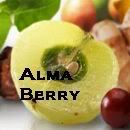
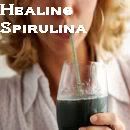
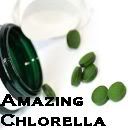 Please leave a comment below!
Please leave a comment below! ______________________________________________________________


